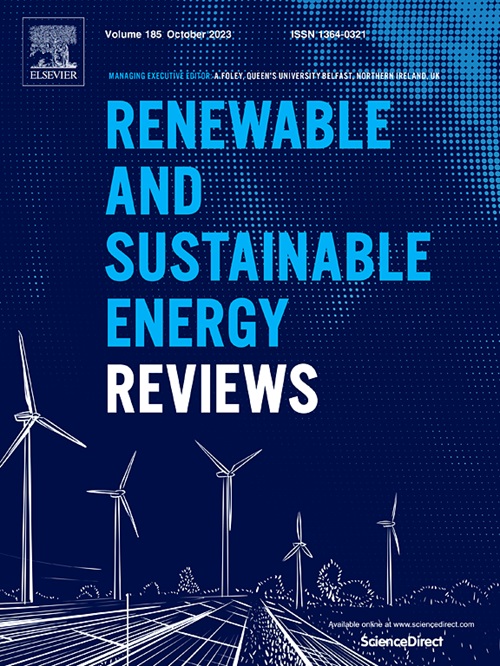Unraveling the spatial complexity of national energy system models: A systematic review
IF 16.3
1区 工程技术
Q1 ENERGY & FUELS
引用次数: 0
Abstract
The energy transition poses spatial planning challenges owing to reliance on renewable sources, featured by a decentralized nature and substantial space requirements. Developing national energy system models capable of integrating spatial details while being robust enough for coherent policy development remains challenging. This study aims to review and analyze necessary spatial modeling details at the national level and methodologies for integration into energy system models. We conduct a systematic literature review on integrating spatially dependent parameters in bottom-up energy system models. The essential role of spatial aspects is highlighted by introducing a classification system for comparing energy system models. We critically evaluate and explore various approaches for assessing spatially dependent parameters in energy systems (energy sources, demand, and infrastructure), spatial aggregation methods (clustering and regionalization), and linking techniques (soft-linking and hard-linking) for incorporating spatially dependent parameters into the energy system models. Results show that energy system models have some spatial capabilities, yet certain crucial elements, like energy infrastructure distribution, are highly aggregated or neglected. Clustering methods can effectively capture spatial variations, and soft-linking techniques can incorporate these spatial details into the energy system model. Here, we propose a novel framework to facilitate the integration of spatial elements into energy system model, a spatial converter to exchange information with the energy system model, a detailed energy system model, and a converter to exchange feedback to the spatial model. Additionally, we advocate for using a soft-linking method with a recursive procedure to exchange feedback between the energy system model and spatial model.

求助全文
约1分钟内获得全文
求助全文
来源期刊

Renewable and Sustainable Energy Reviews
工程技术-能源与燃料
CiteScore
31.20
自引率
5.70%
发文量
1055
审稿时长
62 days
期刊介绍:
The mission of Renewable and Sustainable Energy Reviews is to disseminate the most compelling and pertinent critical insights in renewable and sustainable energy, fostering collaboration among the research community, private sector, and policy and decision makers. The journal aims to exchange challenges, solutions, innovative concepts, and technologies, contributing to sustainable development, the transition to a low-carbon future, and the attainment of emissions targets outlined by the United Nations Framework Convention on Climate Change.
Renewable and Sustainable Energy Reviews publishes a diverse range of content, including review papers, original research, case studies, and analyses of new technologies, all featuring a substantial review component such as critique, comparison, or analysis. Introducing a distinctive paper type, Expert Insights, the journal presents commissioned mini-reviews authored by field leaders, addressing topics of significant interest. Case studies undergo consideration only if they showcase the work's applicability to other regions or contribute valuable insights to the broader field of renewable and sustainable energy. Notably, a bibliographic or literature review lacking critical analysis is deemed unsuitable for publication.
 求助内容:
求助内容: 应助结果提醒方式:
应助结果提醒方式:


